 Peter Beatson – NVG Miklagard
Peter Beatson – NVG Miklagard
1. Introduction
Just before the time of the beginning of the Varangian Guard [1] there were several military manuals written in Byzantium [2]. Some of them list the pieces of armour worn by the different classes of infantry and cavalry soldiers. From these sources [3] it is clear that arm and leg armour was not worn by infantry soldiers at all.
2. Descriptions in the military manuals
The hoplitai (‘heavy’ infantry) who formed the bulk of the foot soldiers were deployed en masse in pike blocks. Essentially a ‘mobile fortress’ for the offensive cavalry arm to sally from and retire to, they would engage in close combat only as a last resort. Relying mainly on their large shields and a forest of points for protection, they wore a coat (kabadion) padded with raw silk or cotton. In the first half of the 10th c. the sleeves of this coat extended to the wrist, providing some protection for the lower arm. Later, the sleeves were shortened toward elbow length. In both cases the sleeves were slit and buttoned so they could be folded back, presumably to prevent overheating on the march. They did not even have metal helmets – only a thick felt cap (kamelaukion) worn under a turban (phakiolion). The infantry wore boots, which could be supple and thigh-length, or thick (“doubled”) and knee-length, providing some leg protection.
The kaballarioi or ordinary cavalry wore helmets (kassidia) and a short klibanion (lamellar corslet) or lorikon (mail shirt), legs were unprotected except again by boots, and speculatively by padded hose (toubia) [4]. Mounted archers also had belted kabadia, padded coats with long and full skirts [5] screening their legs (and the flanks of their horse), probably as they were not able to use their shield as cover from missiles while using the bow.

Around 950 a superheavy cavalry unit was formed – the klibanophori or kataphraktoi. Their entire body, and their horses as well were armoured. Over their lamellar klibanion, which had elbow-length sleeves (manikia), they wore an epilorikon, which was a padded surcoat. Their iron helmets (kassidas sideras) had doubled or tripled zabai (‘screens’, of mail?) covering the whole face except the eyes. Both lower arms and thighs were protected by thickly padded silk or cotton guards, called manikelia [6] for the arms, and kremasmata for the legs, but reinforced by zabai, here possibly meaning panels of mail [7] or strips/plates of leather or horn (or possibly metal). On the lower leg greaves (chalkotoubai) were worn – their construction is not described and the term is a transference of an ancient one, originally referring to the solid bronze ones worn by classical Greek hoplites.
3. Armour of the Emperor’s Varangians
The Varangians were an infantry unit, though of course an elite one. As they are not mentioned in the Byzantine manuals, we can only guess that they were provided with somewhat better armour than the ordinary infantry. There is some later evidence that they were a mounted infantry unit like English huscarls – that is, they rode to battle but fought on foot, as at Dyrrhachion in 1081 [8]. This might allow them to have armour as heavy as the normal cavalryman – i.e. an iron helmet and mail coat [9] or lamellar corslet. According to Anna Komnena [10], fatigue from their rapid advance and weight of their armour contributed to their defeat by Robert Guiscard’s forces at Dyrrhachion.
4. Splinted armour and the Varangians
There are no archaeological remains of any arm and leg armours from Byzantium itself. Despite this, many popular works present splinted limb armour as ‘typically Byzantine’, but in reality there is only a little evidence from art of the period to suggest that splinted limb defenses could have been in use in the Balkans-Asia Minor region during the middle period of the Empire (see below).
Given this lack of information, what then is behind the popular and ingrained depiction [11] of Varangian guardsmen wearing splints on their arms and legs?
Several burials of fully equipped warriors have been excavated in Sweden, at Vendel and Valsgärde. One mound (Valsgärde, grave 8) included splint-and-mail armour for one arm and both legs (see Catalogue, no. 2).
Authors and illustrators inspired by mentions of limb armour in the Byzantine military manuals (which, as we have already seen, actually bear no relevance to infantry equipment) seem to have seized on this Scandinavian find to kit out their vision of the “Viking” troops of the Empire’s best known battalion. Unfortunately the Valsgärde panoply dates to 635-650, long before the Viking age, thus it can have no connection to the Varangian Guard.
5. Is there any evidence for the construction of limb armour used in 10-11th c. Byzantium?
The manikelia of the kataphraktoi are described as being made “of coarse silk or cotton as thick as can be stitched together” [12]. Perhaps these [13] are the type of vambraces worn by Goliath in a well-known 10th c. Armenian carving (Fig. 1):
Figure 1 – ‘Goliath’, sculpted relief on exterior of the Church of the Holy Cross, Aght’amar (Akdamar Adası) in Lake Van, eastern Turkey. Armenian, 915-921.
(source: Wikimedia Commons).
Earlier manuals do mention different armour for arms and legs, but provide no detail beyond a name and the materials that could be used: for example in Leo VI’s Taktika [14] armguards (manikellia or cheiropsella) and greaves (podopsella or chalkotouba) could be made of iron or wood [15].
Returning to the question of possible use of splinted armour in middle-era Byzantium: the neighbouring Khazar khaganate was very advanced militarily, for example supplementing mail or lamellar armour with large iron plates as early as the 8-9th c. (see Catalogue, 4). It would not be surprising if relations with Khazaria influenced development of arms in either or both Byzantium [16] and Rus’. Some parts of splinted limb defenses dated to the 9-10th c. were discovered in the Northern Caucasus near Pyatigorsk (modern-day Russia: see Catalogue, 5).
A well-known depiction on a jug from the Nagyszentmiklós treasure [17] shows a Khazarian-style mounted warrior with splinted vambraces and greaves (Fig. 2):
Figure 2 – Mounted warrior, on Jug 2 from the Nagyszentmiklós treasure (Romania) in the Kunsthistorisches Museum, Vienna.
(source: Lásló and Rácz, p.54).
Enough detail is shown to speculate that they are made of tapered strips fitted together and edged with leather bindings, resembling a pair of splinted greaves excavated from a 5th c. BC Scythian [18] tomb at Nymphaeum in the Crimea (see Catalogue, 1).
The illuminated Synopsis Historion of Iohannes Skylitzes [19] has a depiction of cavalryman with leg armour which has been described as splints in one publication [20], but with a clearer image it is seen to actually be made of smaller elements, like scales or lamellae (Fig. 3a).
A second rider in the same scene confirms this (Fig. 3b):

Figure 3a – Madrid Skylitzes, fol. 195v. detail – Georgian ruler George I retreating before the Byzantine army commanded by Emperor Basil II, an event of 1021-22.
(source: Wikimedia Commons).

Figure 3b – Madrid Skylitzes, fol. 195v. detail – at the rear of the pursuing forces, Basil II wears similar leg armour to George I.
(source: Wikimedia Commons).
A series of luxury ivory ikons showing the Deesis (Christ enthroned with intercessors, here including rows of saints and martyrs) was produced in Constantinople over the course of a century [21]. The “Harbaville Triptych” is the latest known in the series (Fig. 4). The armoured military saints have ‘petals’ at the top of their boots or leggings – realistic detail or artistic flourish? Perhaps these are the tops of splinted greaves worn beneath the footwear…

Figure 4 – Military saints on the “Harbaville Triptych”: carved ivory ikon, Constantinople mid 11th c. Left, detail – the two Saints Theodoros, teron and stratelates. Right, detail – Saints Georgios and Eustathios.
(source: Wikimedia Commons).

6. In conclusion – authentic limb armour for re-enactment combat
Only specialised troops wore limb defenses in this period. Apart from the klibanophorii already mentioned, Kolias [22] gives an example of how transport ships were equipped for the invasion of Crete in 949 – although there was body and head armour for up to 140 men per vessel, only 8 pairs of cheiropsella were included [23], plausibly just for the helmsmen and fire-siphon operators. Unless recreating special units it seems limb protection (whether splint armour or otherwise) is not appropriate for accurate representation of the typical Byzantine soldier [24].
Of course for reasons of safety it is good to have protection of some kind, as we mostly all do [25]. For our reenactment foot combats in Miklagard NVG, the preference should be to have arm and leg protection hidden underneath clothing. Thus we can look authentic, but suffer less bruises!
As there is no specific authentic source to follow for Varangian guardsman, the second-best option may be to look to Byzantine military texts of the period and make the manikelia of composite construction they describe. The obvious drawback is that there are no original examples to copy.
Splinted armour is probably the next best choice. We have both archaeological and iconographic evidence that it was used by neighbouring cultures in the period, so it is reasonable to suppose that it transferred to Byzantium, although we have no firm proof.
Finally, copy a bazuband, or other similar pre-modern protection as your inspiration – at least it will be a functional design tested in battle, but make sure any materials, technology or artistic embellishments (such as an engraved pattern) that would mark it as anachronistic are replaced by those from our culture and period. Keep it unobtrusive, and if asked, make sure you point out to new members and public that it is a non-authentic piece of gear worn for safety reasons.
A catalogue of early medieval limb armours and comparative material
1. Splinted greave from Nymphaeum (Crimean peninsula), Ukraine.
Date: 5th c. BC.
Find: Assigned to ‘Tomb VI’ of an uncontrolled excavation of Scythian tumuli.
Description: Only one of the pair excavated still survives. Total length 20.4 cm, the narrower end is shaped (to fit over the foot?). It is made of thirteen tapered bronze splints joined to each other with bronze wire ‘staples’ through paired holes in a staggered arrangement, this also serves to hold them to a leather backing (sheep/goatskin). The splints look like they overlap and their exposed edges appear to be turned under slightly. All edges were bound with a strip of calfskin, for which closely spaced holes were punched through the metal, though the leather is well preserved whatever lacing was used appears to have perished. In use the greave probably was slipped inside a boot or legging. According to Vickers’ description, there are no traces of straps for attaching it to the leg, but he does not account for large holes at each corner at the narrow end which clearly show in the photograph – see Fig. 5.
Held: Ashmolean Museum, Oxford UK.
References: Vickers, p.45.
2. Splinted limb armour from Valsgärde, Uppland, Sweden.
Date: 635-650AD.
Find: Grave 8 – richly furnished boat grave of a Migration Age Germanic warrior including a helmet, and mail and splint armour (Fig. 6), and including equestrian equipment.
Description: The armour had been folded up and stored together in a wooden casket in the burial. A total of 21 iron splints and fragments of leather straps which originally connected them were found. The splints could be sorted into three groups of seven each, based on length and number of straps. Group 1 (Fig. 7) were the shortest (23.5 to 27.4 cm), and were riveted by 1 or 2 domed bronze nails to two thin straps (1.5 cm wide). Five splints were broad and tapered while the other two were narrow and more or less even width. Each was bent upward at the wide end while their narrow end is formed into a dragon-head with features outlined in slight relief, a small iron ring is inserted through each ‘nostril’. The wider splints are otherwise unembellished while the narrow ones are covered in cross-wise grooves.
Group 2 (Fig. 8) were 33-34 cm long, all more-or-less rectangular with a slight taper, though one has one scalloped and one straight edge. Both ends are slightly bent outward. There are four broad splints which have a pair of lines cut parallel to the edges, alternating with three narrower ones which are again marked with (diagonal) hatching. At the narrower end are from 2 to 4 holes for rings linking them to a mail garment. Though they all have five matching rows of 2, 3 or 4 bronze rivets, only the top, middle and bottom rows were functional, attaching them to three leather staps (1.2 to 1.6 cm width).
Group 3 (Fig. 9) is pretty much a mirror-image of Group 2, though slightly longer (35.5 to 36.7 cm) and the system for attaching them to mail differs – the end of each splint is bent over and has notches filed into it, wherein the rings are fitted and held in place with a piece of wire (Fig. 10):

Figure 10 – Valsgärde 8, attachment of mail to splints (left) Groups 1 & 2; (right) Group 3 (source: Arwidsson 1954, fig. 19).
Group 1 is currently interpreted as a forearm guard with attached mail hand protection, and Groups 2 & 3 as shin guards with attached mail foot protection. Also found were two small bronze buckles and six small iron buckles, which fastened the straps of the arm and leg armour respectively.
Held: Gustavianum, Uppsala University Sweden.
References: Arwidsson (1939 & 1954); Engström.
3. Armoured gauntlet(s) from Langobardic cemetary at Castel Trosino, central Italy.
Date: 7th c. AD.
Find: Grave 119 – tomb of a fully equipped warrior, including Avar or Byzantine lamellar corselet and helmet.
Description: A small rectangular patch of mail that apparently covered the back of the hand. Whatever it was attached to (leather glove?) has disappeared. Size about 11 by 8 cm, made of several rows of round section mail. Two similar are displayed seperately in the museum, but it is not clear if both originated in grave 119.
Held: Museo nazionale dell’ Alto Medioevo, Rome (pers. obs. 1994).
4. Plate greave(s) from Kuban or Khazar cemetary at Borisov, Russia.
Date: 8-9th c. AD.
Find: Burial near Gelendzhik, in Krasnodar krai on the northeastern coast of the Black Sea (modern-day Russia). A helmet; mail armour; greave(s); two arm/shoulder guards; and weapons were placed together in a large pot

 Figure 11 – Borisov, tubular greave: (left) front plate; (right) rear plate. (drawing: PB).
Figure 11 – Borisov, tubular greave: (left) front plate; (right) rear plate. (drawing: PB).
Description: Iron armour for lower leg, made of anatomically-formed solid plates. Fragment 1 (Fig. 11, left) protected the shin – a narrow but solid strip with pronounced ‘V’ section; the top end expands slightly to a ‘T’-shape and the lower end curves outward near the ankle; along the sides six pairs of lugs to which (a) poorly-preserved thinner plate(s) is/are attached with prominent rivets. Fragment 2 (Fig. 11, right) from the rear, a single thin plate, anatomically moulded as the calf muscle. In its current state it would reach only part way around to the back of the leg – possibly an accident of preservation (or was it designed to protect only the exposed outer side of the calf?); some holes, which may be attachment points (or just corrosion) – according to Gorelik the front and back parts were joined by loops on the outer side of the leg and straps on the inside (reconstruction – Fig. 13-b).
Held: Not known, possibly Moscow Historical Museum.
References: Exhibition – “Horse and Rider” at Musée Guimet (Musée nationale des arts Asiatiques, Paris), 2003, documented with photographs on the Tozhe Gorod website ; Gorelik, p.135, plate IX-5 ; Nicolle & McBride [26], p.11, 45.
Comment: Similar greaves are seen in Chinese paintings of the period, possibly their ultimate source [27]. Viewed in this context a slightly earlier painting of an armoured equestrian figure from the Central Asian kingdom of Sogdia (Fig. 12) might conceivably show solid armguards of semicylindrical plates, an early ancestor of the bazuband.
![44 Figure 12 - Part of wooden shield covered with painted parchment, width 61 cm [27]. Qalai Mugh (120km east of Samarkhand, modern-day Tajikistan), Sogdian, 7-8th c.](https://pneymatiko.files.wordpress.com/2012/10/44.jpg?w=468)
Figure 12 – Part of wooden shield covered with painted parchment, width 61 cm [27]. Qalai Mugh (120km east of Samarkhand, modern-day Tajikistan), Sogdian, 7-8th c.
5. Parts of Khazarian splint armour from Kozji Skaly, Russia.
Date: 9-10th c. AD.
Find: Various pieces of Khazarian armour plus weapons found on Kozji Skaly, a peak of Mount Beshtau in Stavropolsky krai, near Pyatigorsk (in modern-day Russia).
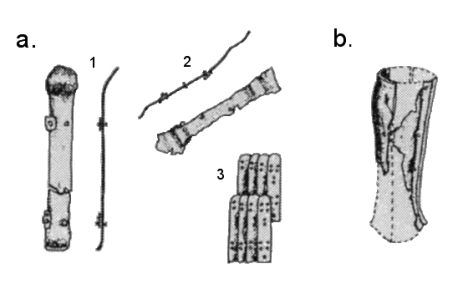
Figure 13 – a. Kozji Skaly: 1- splint from greave; 2 – splint from vambrace; 3 – associated lamellae from body armour. b. Borisov: reconstruction of tubular greave, see Catalogue, 4
(source: Gorelik, pl. XI-5).
Description: The full extent of the find is not described in the reference, only one large splint from a greave (Fig. 13-a, 1) and one smaller (Fig. 13-a, 2) from a vambrace are shown and measurements are not provided. Both were riveted to a pair of leather straps (a similar construction to Catalogue, 2). The greave splint is reflexively curved which could conceivably fit a rider in bent-legged position but seems impractical for standing – possibly this is post-depositional damage. The vambrace broadens at both ends and is bent out, presumably to accomodate the joints.
Held: not known.
Reference: Gorelik, p.140, plate IX-5.
BIBLIOGRAPHY
Anderson, J.C. (1997). ‘The Madrid Chronicle of John Skylitzes’ (cat. no. 338), in H.C. Evans & W.D. Wixom (eds.) The Glory of Byzantium: Art and Culture of the Middle Byzantine Era A.D. 843-1261. Metropolitan Museum of Art: New York, p.501-02.
Arwidsson, G. (1939). Armour of the Vendel period. Acta Archaeologica 10, 31-59.
Arwidsson, G. (1954). Valsgärde 8 (Die Gräberfunde von Valsgärde, II). Almqvist & Wiksell: Uppsala.
Dain, A. (1938). Sylloge tacticorum, quae olim “Inedita Leonis Tactica” dicebatur. Société d’Édition «Les Belles Lettres»: Paris.
Dawson, T. (2002). Suntagma hoplôn: the equipment of regular Byzantine troops, c.950 to c.1204, in: D. Nicolle (ed.), Companion to Medieval Arms and Armour, p.81-90. Boydell: Bury St Edmunds.
Dennis, G.T. (2010). The Taktika of Leo VI. (Dumbarton Oaks Texts 12). Dumbarton Oaks: Washington DC.
Engström, J. (1997). The Vendel chieftains: a study of military tactics, in: A. Nørgård Jørgensen & B.L. Clausen (eds.) Military Aspects of Scandinavian Society in a European Perspective, AD 1-1300, p.248-55. National Museum of Denmark: Copenhagen.
Evans, H.C. & W.D. Wixom (1997). The Glory of Byzantium: Art and Culture of the Middle Byzantine Era A.D. 843-1261. Metropolitan Museum of Art: New York.
Franklin, S. & A. Cutler (1991). ‘Varangians’, in A.P. Khazdan (ed.) Oxford Dictionary of Byzantium, vol. 3. Oxford University: New York, Oxford, p.2152.
Gorelik, M. (2002). Arms and armour in south-eastern Europe in the second half of the first millenium AD, in: D. Nicolle (ed.), Companion to Medieval Arms and Armour, p.127-49. Boydell: Bury St Edmunds.
Haldon, J.F. (1975). Some aspects of Byzantine military technology from the sixth to the tenth centuries. Byzantine and Modern Greek Studies 1, p.11-47.
Heath, I. (1979). Byzantine Armies 886-1118 (Men-at-Arms 89). Osprey: London.
James, S. (2004). Excavations at Dura Europos 1928-1937. Final Report VII: The Arms and Armour and Other Military Equipment. British Museum: London.
Jeffreys, E. (1998). Digenis Akritis: the Grottaferrata and Escorial versions. (Cambridge Medieval Classics 12). Cambridge University: Cambridge.
Kalavrezou, I. (1997). ‘Triptych Icon with the Deesis and Saints’ (cat. no. 79), ‘The Harbaville Triptych’ (cat. no. 80), in H.C. Evans & W.D. Wixom (eds.) The Glory of Byzantium: Art and Culture of the Middle Byzantine Era A.D. 843-1261. Metropolitan Museum of Art: New York, p.131-4.
Kirpitchnikov, A.N. (1971). Drevnerusskoe Oruzhie 3: Dospekh, komplekhs boevykh sredstv IX-XIII vv. Arkheologiia SSSR (Akademiia nauk SSSR, Institut Arkheologii). Nauka: Leningrad.
Kolias, T.G. (1988). Byzantinische Waffen: ein Beitrag zur Byzantinischen Waffenkunde von den Anfängen bis zur Lateinischen Eroberung (Byzantina Vindobonensia, vol. 17). Verlag der Österreichischen Akademie der Wissenschaften: Vienna 1988.
László, G. and I. Rácz (1977). Der Goldschatz von Nagyszentmiklós. Corvina Kiadó: Budapest.
Luttwak, E.N. (2009). The Grand Strategy of the Byzantine Empire. Harvard University: Cambridge MA.
Magnusson, M and H. Pálsson. (transl.) (1966). King Harald’s Saga. Penguin Classics (reprinted 1984).
Medvedev, A.F. (1959). Oruzhie Novgoroda velikogo. Material’y i issledovaniia po Arkheologiia SSSR 65, p.121-191.
McGeer, E. (1995). Sowing the Dragon’s Teeth: Byzantine Warfare in the Tenth Century (Dumbarton Oaks Studies 33). Dumbarton Oaks: Washington DC.
Nicolle, D. and A. McBride (1992). Romano-Byzantine Armies 4th-9th Centuries (Men-at-Arms 247). Osprey: London.
Oberhelman, S.M. (transl. & ed.) (1991). The Oneirocriticon of Achmet: A Medieval Greek and Arabic Treatise on the Interpretation of Dreams. Texas Tech University: Lubbock TX.
Pryor, J.H. & E.M. Jeffreys (2006). The Age of the Dromon: The Byzantine Navy ca 500-1204 (The Medieval Mediterranean 62). Brill: Leiden.
Sewter, E.R. (transl.) (1969). The Alexiad of Anna Comnena. Penguin Classics (reprinted 1988).
Vickers, M. (1979). Scythian Treasures in Oxford. Ashmolean Museum: Oxford.
NOTES
[1] The year of the formal inauguration of the ‘Imperial Varangians’ guard unit is debatable, the mainstream position is 988 (eg. Franklin & Cutler) but anyway it is likely to be within a couple of decades either side of 1000. PB (back)
[2] I acknowledge of course that the label ‘Byzantine Empire’ is a neologism, and its inhabitants justifiably called themselves Rhomaioi, ‘Romans’, not ‘Byzantines’. With due respect to modern scholars who prefer to use more accurate terms like Rhomania, or ‘the continuing Eastern Roman Empire’, I have used the more generally familiar ‘Byzantium’, which thanks to their efforts is now largely devoid of the negative associations it used to conjure. PB. (back)
[3] Most relevant information comes from two manuals:
1. Nikephoros II Phokas (Emperor), c.965: Stratigiki Ekthesis kai Syntaxis Nikephorou Despotou (‘Presentation and Composition on Warfare of the Emperor Nikephoros’); commonly referred to as Praecepta Militaria; for Greek text and English translation see McGeer, p.12-59.
2. Anonymus, c.950: Sylloge Taktikon (‘Compendium of Tactics’); Greek text – Dain; no full translation in English is available (J. Haldon, in prep.?); some extracts discussed in McGeer. (back)
[4] Dawson, p.83. Although padded toubia (probably those called kamptotoubia: Gk. kampos = ‘country’ or ‘rustic’) are not specified in the military texts, they are described in a Byzantine dream interpretation book, the Oneirokritikon of ‘Achmet’, c.10th c., §242: ‘From the Persians, concerning shoes, toubia, and trousers’ – “… if the toubia and their padding were made of wool, will effortlessly get proportionate wealth from an official; if of cotton, he will aquire wealth from a gracious homeowner; if of raw silk, the wealth will be less but more splendid.” Oberhelman, p.216-7. (back)
[5] Dawson, p.87. (back)
[6] Alternatively called cheiropsella in Nikephoros Ouranos’ Taktikon of c.1000 (§60), which here mostly follows the earlier Praecepta (see note 3 above) in its descriptions. McGeer, p.114-15. (back)
[7] For an instructive, though early example of this type of zaba, see Catalogue, 3 – but note that at the time when this item was deposited, zaba designated an entire coat of mail: Haldon, p.24. (back)
[8] Anna Komnene (princess) c.1150, Alexiad, Book IV-vi. Sewter, p.146. (back)
[9] By 1066 the Norwegian king Harald hardrada owned an unusually long and strong coat of mail dubbed Emma, reaching below the knee (King Harald’s Saga, ch.91: Magnusson and Pálsson, p.151). No source, however, states that he obtained it during his Byzantine service (c.1035-44), and there is no compelling reason to suspect so – it must after all be the royal perogative to have the finest equipment in any case! PB. (back)
[10] Alexiad, Book IV-vi. Sewter, p.147. (back)
[11] Heath, p.38, Plate F. (back)
[12] Praecepta Militaria ΙΙΙ,4: McGeer, p.34-5. (back)
[13] Alternatively they could be constructed of laminated metal plates with leather edge bindings, like a partial 3rd c. limb defence (James, cat. no. 446) from Dura Europos, Syria – this is a late witness to the strong tradition of laminated armour use in late Hellenistic and imperial Roman armies (James, p.126-28), but it seems there was no continuity into our period. It is generally believed that laminated construction was reintroduced into Europe by the 13th c. Mongol incursions – for this, and for evidence of laminated armour in pre-Mongol Rus’, see Kirpitchnikov, p.15-18; Medvedev, p.175-182. (back)
[14] c.900. Commonly referred to as the ‘Tactica of Leo the Wise’, Emperor Leo VI wrote Ton en Polemois Taktikon Syntomos Paradosis (‘Short Instruction of the Tactics of War’), intending it to be a practical manual. Although he sought the advice of his generals, he mostly rehashes Maurikos’ Strategikon (early 7th c.) and Classical military manuals, so it may not reflect the then current practise of warfare. For Greek text and English translation, see Dennis. (back)
[15] When describing the skoutatos heavy infantry equipment (Constitution VI, 21: Dennis, p.92-3) Leo gives these two names for armguards, which are generically called cheiromanika, to be made of iron or wood. It is not clear whether these are actually two different types of armguard, and if so that the distinction was due to the materials they were made of – though, if the given order of names matches that of the materials, it contradicts the definition provided at Const. VI,3 where he indicates that cavalryman’s cheiropsella are cheiromanika sidera, ‘iron armguards’ (Dennis, p.84-85). Likewise the two names for greaves (generically called periknemidas). Given the natural properties of wood, splints are probably the most practical construction in this material. PB. (back)
[16] The two armies may anyway have not been much different – the Roman system of antiquity had already been completely transformed by adoption of steppe tactics and equipment from the Huns, then the Avars (Luttwak, p.56-9). One possible example of transfer of Khazar military innovation is ‘shield fences’ around encampments (noted by Abu Said Gardizi, an 11th c. Persian historian drawing on 9th c. sources: Gorelik, p.140), also used by the Byzantines from the 10th c. (the skoutaroma: McGeer, p.350). PB. (back)
[17] A disputed set of gold tableware discovered in modern-day Romania, and displaying features of Sassanian Persian, Byzantine and Central Asian art – different authorities have assigned it to the Avars, Bulgarians, Khazars or Hungarians, with dates ranging from the 6th to the end of the 10th century. Held – Kunsthistorisches Museum, Vienna (Austria). (back)
[18] The Scythians probably invented splint armour, which is well-attested both in art of the period and in the archaeological record. PB. (back)
[19] Currently scholarly consensus holds that the ms. was produced in southern Italy (Palermo?), and should be dated 1150-75 (Anderson, 1997). Held – Biblioteca Nacionale, Madrid (Vitr. 26-2). (back)
[20] Heath, p.11. (back)
[21] The Harbaville triptych is held in the Louvre, Paris (inv. no. OA 3247: Kalavrezou 1997, cat. no. 80). The series’ prototype is held in the Palazzo Venezia (Venice), dated c.950. A third triptych of intermediate date is kept at the Vatican (Museo Sancta della Biblioteca Apostolia: inv. no. 2441: Kalavrezou 1997, cat. no. 79). (back)
[22] Kolias, p.65-9. (back)
[23] ‘The expedition which took place against the island of Crete and the arming of both the ships and the cavalry under Constantine and Romanos, the Emperors born in the purple, faithful in Christ, in indiction seven’, recorded by Constantine VII Porphyrogennitos c.949, incorporated in de Cerimoniis. Note that in this troop transport role, the dromon’s crew plus passengers totalled 300. Pryor & Jeffreys, [b].II 1-22 (p.556-7). (back)
[24] The very untypical (and legendary) Byzantine hero Digenis Akritis disdained to don armour, whether fighting men (even whole armies!), beasts or monsters – so it is interesting that he wears his manikin (bracers) when fencing with a most dangerous band of outlaws (Digenis, Grottaferrata version Book 6: Jeffreys, p.161). Although the setting of Digenis is the Arab-Byzantine frontier of the 9-10th c. our earliest known version was written c.1300, and it incorporates some later material (Jeffreys, p.xli). (back)
[25] There is no mention of soldiers wearing gloves in any source either, but it would be extremely unwise for us to go without these! Possibly manikelia incorporated protection for the hands as well as lower arms? PB. (back)
[26] In this reference the location is called Gendjik or Tuapse, and the reconstruction is different, but it is almost certainly the Borisov find. (back)
[27] Source: Fine Art Images (back)
‘Armour in Byzantium in the early years of the Varangian Guard, with special reference to limb defenses’, written and webbed by Peter Beatson.
Sourse ‘Christobel & Peter’s Homepage’
Filed under: ΙΣΤΟΡΙΑ |






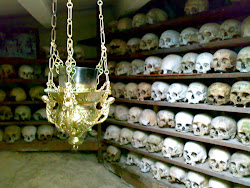






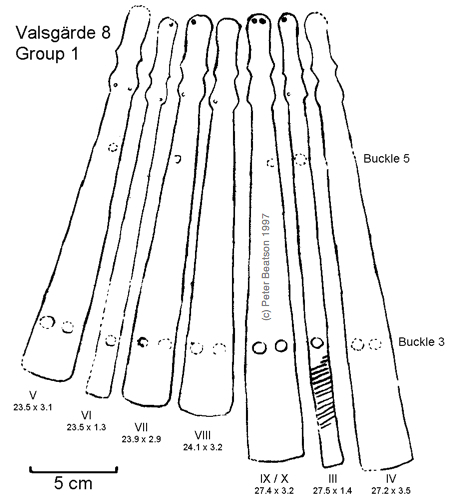



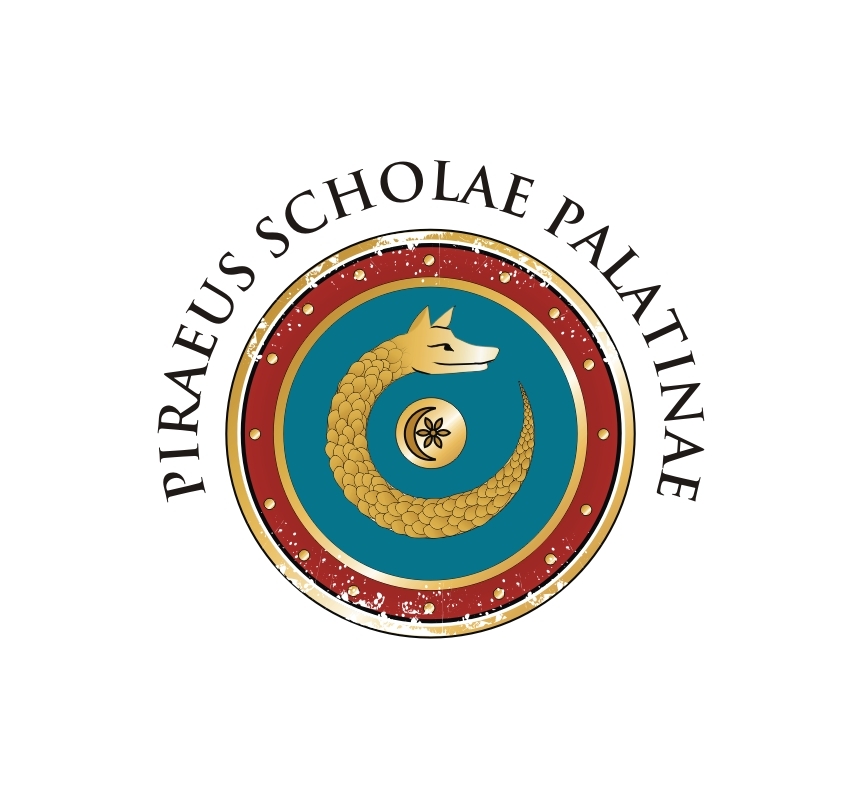
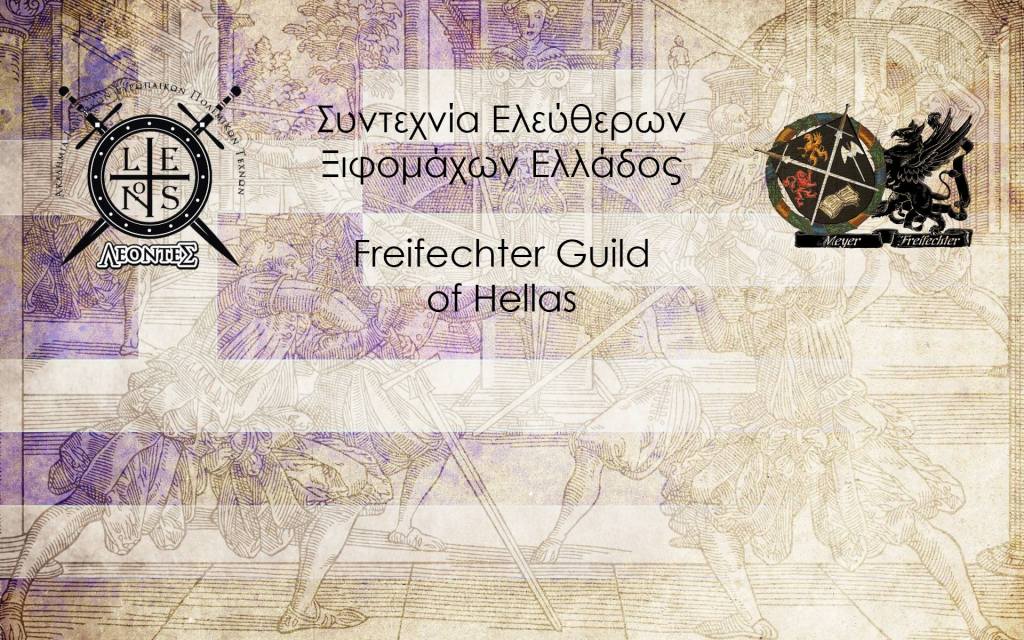

[…] Armour in Byzantium in the early years of the Varangian Guard, with … […]